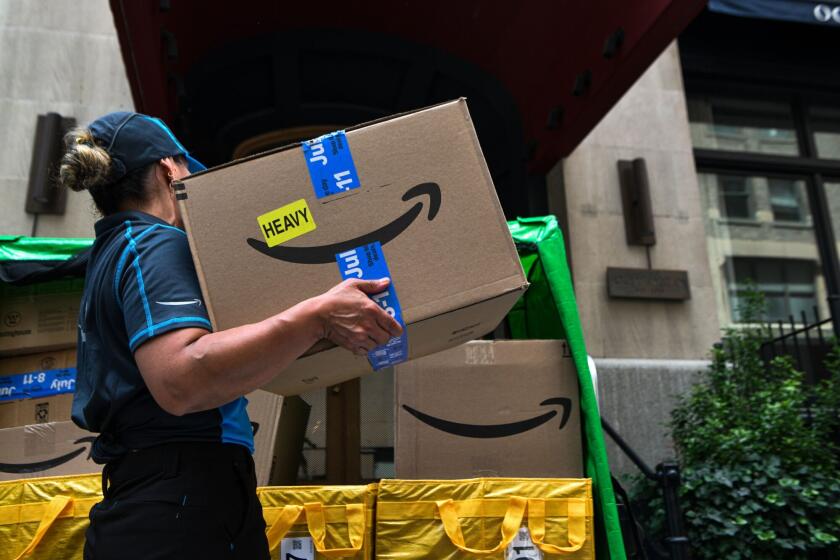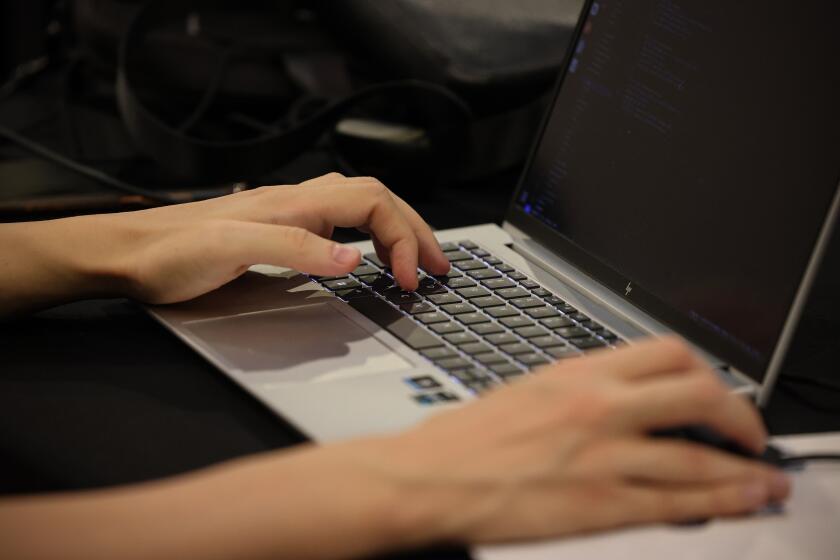American Airlines changes its boarding process
- Share via
Depending on who you talk to, the new boarding process at American Airlines has either shortened the time it takes to load the planes or caused “complete chaos” in the cabin.
The new boarding procedure, launched in May, does away with the airline’s long-held practice of boarding passengers starting from the back of the plane to the front.
Once the first-class and executive-class passengers and other travelers with priority seating get onboard, the airline gate agents now board coach passengers in the order they checked in, regardless of where they are seated.
The airline says the new procedure, known as the “random” seating method, saves time because it minimizes the gridlock that occurs when people in the same row try to get to their seats at the same time.
“You definitely will not have 24 people in four rows boarding at the same time,” said Scott Santoro, director of airport consulting for American Airlines. He said studies have shown that the random seating process reduces boarding times 5% to 10%.
The Assn. of Professional Flight Attendants disagrees. It contends the process has created “complete chaos” among passengers, forcing attendants to spend more time preparing the plane for takeoff. The attendants are irked, it says, because they are not paid for the extra time needed to load the plane.
“We understand it needs to be tweaked a little,” said Jeff Pharr, a spokesman for the flight attendants union.
For nearly a decade, airlines and academics have tried to determine the fastest way to load a plane. And for good reason: The less time airlines spend boarding passengers, the more revenue-generating flights they can squeeze into a day. Every minute cut on boarding can save $30 per flight, according to a 2008 study in the Journal of Transport Management.
All major airlines first board the first-class, business-class or elite-status passengers and the travelers with children or disabilities. But after that, strategies diverge.
Alaska Airlines, JetBlue Airways, US Airways, Continental Airlines and several others load their planes from the back of the cabin to the front.
United Airlines prefers the “outside-in” method: Passengers with window seats board first, then those with middle seats and finally those with aisle seats. Southwest Airlines doesn’t assign seats; the first passengers to check in are the first to board.
Until recently, US Airways used the “reverse-pyramid” method, in which passengers are seated simultaneously from both ends of the plane, window-seat passengers first.
Several academic studies suggest that the random and reverse-pyramid seating methods are faster than the back-to-front process. But the studies say those methods don’t work well when loading families or groups of travelers. And some airlines say the random method can confuse and frustrate passengers.
“Our data confirms that pure random boarding is faster,” said Sandy Stelling, Alaska Airlines’ managing director of airport services. “However, we determined the negative impact, measured by our customers — elite Mileage Plan members and non-elites alike — was not worth the small gain in time.”
One way to cut boarding time by up to four minutes, according to a study presented at the 2009 Swiss Transport Research Conference, is to reduce from 15% to 5% the percentage of passengers carrying two or more pieces of luggage.
• Spirit to charge for printing boarding passes
Florida-based Spirit Airlines announced last week that it is cutting fares by $5 each way for travel starting Nov. 1. But there is a catch: You have to print your own boarding pass.
If you ask the ticket agent to print your pass, you will be charged a $5 fee.
To avoid the fee, you can print a pass from an outside computer or at a kiosk at the airport. But starting next year, the kiosk-generated pass will cost $1.
“We want to give [passengers] the ability to choose the extras they want without forcing them to pay for add-ons they don’t want or need,” said Spirit President Ben Baldanza.
Spirit made headlines last summer when it added a charge of up to $45 to bring carry-on luggage.
More to Read
Inside the business of entertainment
The Wide Shot brings you news, analysis and insights on everything from streaming wars to production — and what it all means for the future.
You may occasionally receive promotional content from the Los Angeles Times.










